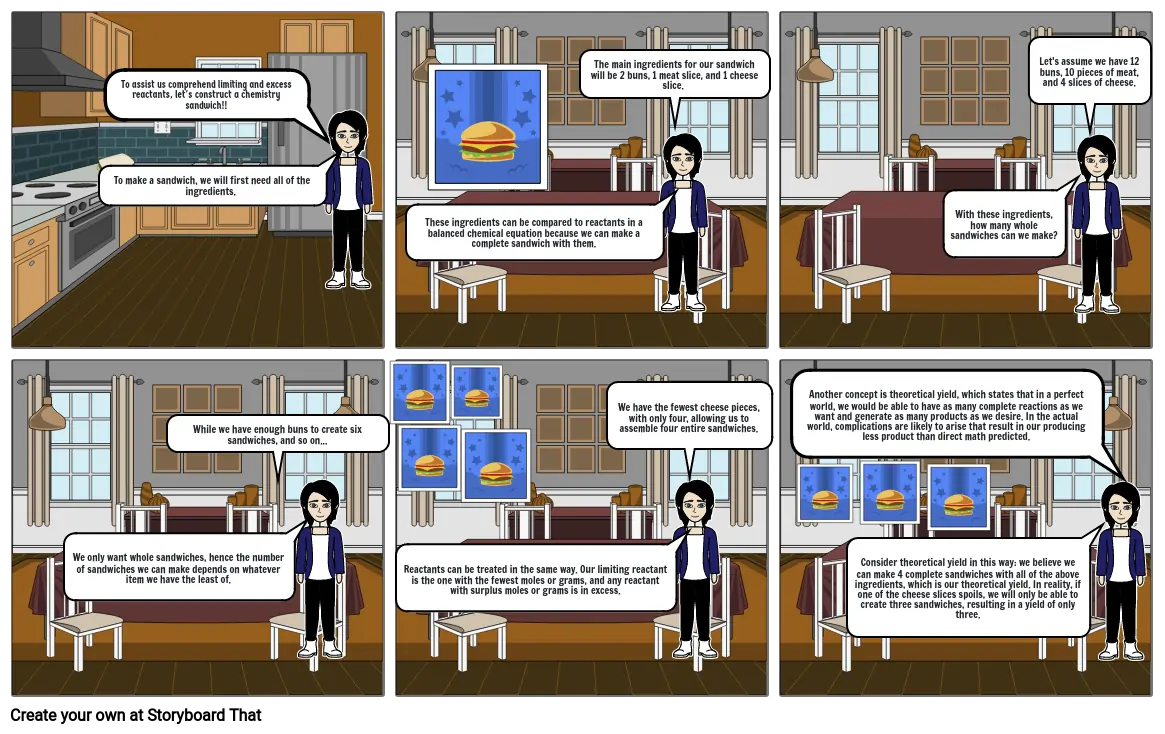LIMITING AND EXCESS REACTANTS

Storyboard-Text
- To make a sandwich, we will first need all of the ingredients.
- To assist us comprehend limiting and excess reactants, let's construct a chemistry sandwich!!
- These ingredients can be compared to reactants in a balanced chemical equation because we can make a complete sandwich with them.
- The main ingredients for our sandwich will be 2 buns, 1 meat slice, and 1 cheese slice.
- With these ingredients, how many whole sandwiches can we make?
- Let's assume we have 12 buns, 10 pieces of meat, and 4 slices of cheese.
- We only want whole sandwiches, hence the number of sandwiches we can make depends on whatever item we have the least of.
- While we have enough buns to create six sandwiches, and so on...
- Reactants can be treated in the same way. Our limiting reactant is the one with the fewest moles or grams, and any reactant with surplus moles or grams is in excess.
- We have the fewest cheese pieces, with only four, allowing us to assemble four entire sandwiches.
- Another concept is theoretical yield, which states that in a perfect world, we would be able to have as many complete reactions as we want and generate as many products as we desire. In the actual world, complications are likely to arise that result in our producing less product than direct math predicted.
- Consider theoretical yield in this way: we believe we can make 4 complete sandwiches with all of the above ingredients, which is our theoretical yield. In reality, if one of the cheese slices spoils, we will only be able to create three sandwiches, resulting in a yield of only three.
Über 30 Millionen erstellte Storyboards

